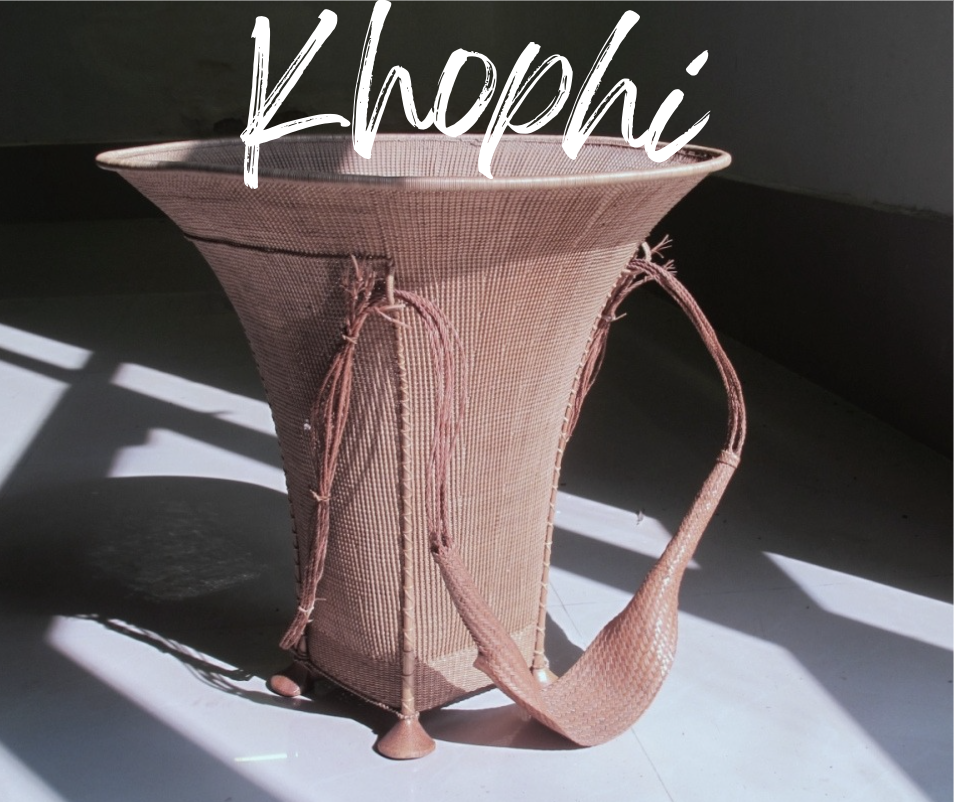Sourcing Products In Vietnam: Including The best craft related products to Import from Vietnam
May 02, 2022 | Link Ha
 Sourcing Products in Vietnam: Including top Products That Could Only Be Founded In Vietnam
Sourcing Products in Vietnam: Including top Products That Could Only Be Founded In Vietnam 1. Ao dai
The áo dài is considered one of the country's most striking symbols of beauty. Over hundreds of years, the áo dài has evolved alongside Vietnam, going from regal to practical, humble to high fashion, and back again. Its elegant lines flatter both men and women. However, áo dài shouldn't be worn on any occasion because wearing this national costume shows respect at weddings, important meetings, and celebrations. The best way to wear áo dài is by choosing your material and colors and visiting the tailor shop. People usually use chiffon, silk, or lace to make Ao Dai because of its light and femininity. According to customers' requirements, Bespoke solutions are also offered via various creative communities. The shops can make your Ao Dai from 24 hours up to 2-3 days or more, and they have shipping services all over Vietnam.

Photo: aodaiquynhanh
Average price: $30
2. Lanterns

Photo: Linh Tran
This beautiful and charming decoration shouldn't be found anywhere, but Hoi An called the city of lanterns. Hoi An has lanterns everywhere: on its storefronts, on its bridges, in its markets, floating down its river. They look good, they're iconic, and they're heavily associated with Vietnam. These lanterns are usually made from a bamboo frame and silk, coming in many different shapes, sizes, and colors. Hoi An currently has more than 30 lantern workshops and 200 shops, creating jobs for many local people. Its lanterns have also become a unique souvenir for tourists. While lanterns made in those countries are covered with nylon and paper, making them easy to tear and go on fire, Hoi An lanterns are covered with cloth, such as flax and silk, promoting the durability and captivating colors of the products. Hoi An craftsmen have exerted great efforts to preserve and encourage lanterns making and worked out initiatives to renovate the product to make it more marketable. Millions of lanterns are made in Hoi An every year to serve domestic and export demand to Japan, Singapore, and European countries.
Average price: around $5 or $6 for an attractive, high-quality lantern
3. Silk
Although not considered the excellent Silk Cradle of humanity, Vietnam has consistently been recognized by the world as a country with a long history of silk craft over thousands of years. Vietnamese silk is gradually gaining a place in the textile industry for flexibility, durability, and commercial value. With a superior competitive advantage in price and design, this land still preserves its silk handcrafted. Silk made from Vietnam is very famous in the international market, conquering the most difficult countries like France, Italy, India, and Japan. In addition to fashion items, silk is also used as raw material to create beautiful silk paintings or silk lanterns. Silk is easily creased and difficult to straighten, so it needs specific preservation. In a hot, humid, and sticky country, it makes sense that silk is so popular. And though it was once reserved for royalty and nobility, silk is now much more widely worn (though it's still relatively expensive).

Photo: nld.com.vn
Vạn Phúc silk village, 20 minutes from Hanoi, is the place that provides the best-qualified silk. Visitors can shop for high-quality silk from the source, learn about silk-making and get the áo dài tailored!
Average price: around $4 for a meter of good silk
4. Leather
With about 240 operating businesses, Vietnam's leather and footwear are one of the key export industries.
Leading exporters of footwear with leather uppers worldwide in 2009 (GDS 2011)
However, most exporters are foreign-owned companies; domestic companies produce mainly for the local market. Foreign buyers supply the inputs and designs. The enterprises perform the only final assembly. The animal skins used to make the products primarily come from foreign countries and are then transported to Vietnam, where they are treated in the tannery. Then the leathers are designed, crafted, and stitched by skilled artisans. There is a wide range of products: wallets, belts, bags, shoes, clothing. which can be designed exclusively. Labor costs are low and highly competitive, but most workers have no professional skills or expertise. Consequently, labor productivity is low. Recently, plenty of businesses in Vietnam has started up with leather products, expressing their passion for this iconic and durable material.
Average price: from $10

Pic Courtesy: Statista
5. Conical Hats
While some locals wear these conical hats "Non La" for cultural reasons, many find them practical because it's the best way to protect them from the rain and the sun. To make a proper hat, not only the maker is talented, but also their experiences are plentiful. After being separated into skinny strings during the dry season, bamboo cataphyll must be quickly submerged in water to preclude tearing and breaking. After being cleaned with sand, the palm will be pulled and turned from dark green to white after being sun-seasoned. Finally, to make them whiter and preserve their color, they will be exposed to sulfur, separated, and ironed. Sewing and decorating must be sophisticated, too.
Due to its popularity, each region in Vietnam has a well-known conical hat-making village. The conical hat of the Tày group has a distinctively red color, whereas that in Thanh Hóa differs from others with a 20-hem frame. Huế's is thin and elegant, contrary to the thick ones from Bình Định.

Photo: reisennachasien.com
Average price: around $1 only!
6. Wooden clogs
Guốc mộc or wooden clogs are traditional footwear for both males and females in Vietnam. Formerly, Vietnamese wear wooden clogs with vertical straps to protect the toes. Nowadays, conventional wooden sandals are still available and can be bought in the marketplace for about $3. More fashionable sandals are now open and made from the wood of the bead tree, fir, and coral tree. Bead-tree wood is considered the best quality as it does not easily break or bend. Artisans shape the sandal, then they are painted with glossy paint before decorations are drawn onto the surface.

Photo: Tuấn Đào
7. Phin coffee filter
Vietnamese Coffee has conquered the coffeeholic all over the globe. During preparing a Vietnamese Coffee glass, a specific tool called "Phin cà phê" is indispensable. Roasted Coffee is placed into the metal filter comprising four stainless steel parts: a plate, the body, a press disk, and the lid. Phin coffee filters could be found in a small market to a luxury boutique, bringing an artistic trend of enjoying Coffee.

Average price: About $3
8. Traditional paintings
Art lovers couldn't resist the attractiveness of Đông Hồ's traditional paintings. Apart from the beauty of lines and layouts, the folk feature of Dong Ho painting also lies in its color and paper; both are handmade and derived from materials available in nature. The report is made of tree bark, powder of seashells, and glutinous rice. The colors of paint used in Dong Ho pictures are processed from various natural materials easily found in Vietnamese villages. Because of their famous appearance, folk painting is available throughout Vietnam, from the village markets to the capital city. From over 100 families in the 1950s, currently, only a handful of families still making the traditional craft, and most villagers have now turned to joss paper making.

9. Ceramic
Vietnamese ceramics have improved to reach international standards, gracing rooms across Asia, Europe, Africa, and beyond. Top Pottery/Ceramics Products In Vietnam include Kitchen and Bathroom items, Decorative accessories, Construction, and Technical equipment. The ceramics sector is highly developed with many advanced factories/technologies that can provide various ceramics designs based on needs. Ceramic products are very high-quality, and the sturdy material makes them crack-resistant and durable. Ceramic villages which manufacture the best quality products expand all over Vietnam. Ceramics may be tough to transport, but this does not stop many international tourists from loading extra space in their suitcases with handcrafted ceramics.

Photo: battrangnews.com
10. Furniture
Besides ceramic products, rattan, bamboo, seagrass, and water hyacinth plaiting material have reached the highest values in the total turnover of Vietnamese handicraft export (from 2011–to 2018). Generally, Vietnam has grown plenty of different bamboo plants and used them to make furniture, household products, food consumption, clothing, and even medicines. Especially, Vietnam bamboo furniture and bamboo household products have become the most popular globally because household products and furniture from bamboo in Vietnam are high quality, cost-effective, durable, functional, and good-looking.
When searching for bamboo furniture and bamboo products manufacturers or wholesale suppliers in Vietnam, there is a substantial available source to pick the trustworthy and good service manufacturing companies in Vietnam. Those trusted factories are located across the country from South to North, especially in some rural handicraft villages. Also, there are many good wholesalers and sourcing agents in big cities to help when sourcing products from Vietnam.
While there is an increasing trend that the world importers are sourcing wood furniture from Vietnam manufacturers, Vietnam is one of the few countries among the top global exporters of wood products that have increased exports in the face of the downturn in global demand. It is on the path to becoming an enormous Southeast Asian wood and wood products exporter.

Leading exporters of wood furniture, lighting, and prefabricated buildings worldwide in 2009 (GDS 2011)
Handicrafts stand out as an essential part of Vietnam's cultural heritage; the industry is a source of productive activities, incomes, and livelihoods in rural areas throughout the country, with women and ethnic minorities among the greatest beneficiaries. Such development has been rapid with the availability of resources: skilled labor, quality raw materials, designs, and markets. The investment costs are also low relative to other industrial sectors. Labor-intensive and often highly dispersed handicrafts provide additional incomes in times of low labor demand in agriculture, whose exports can also be an essential source of foreign earnings. Due to the capacity for digital marketing access, competitiveness in traditional handicraft villages has been improved.

Top 10 largest import markets of Vietnamese handicrafts (ITC)
Furthermore, Vietnam exports handicrafts to most countries and regions globally; the major export markets for Vietnamese handicrafts are Japan, the USA, the European Union (EU), Russia, and some countries of the Association of Southeast Asian Nations (ASEAN). Handicraft is considered one of Vietnam's top 10 most significant export values. Fine-art handicrafts of Vietnam are now available in 163 countries and territories worldwide. Vietnam has become one of the many developing countries experiencing success in the handicraft exporting market.
Recommended








